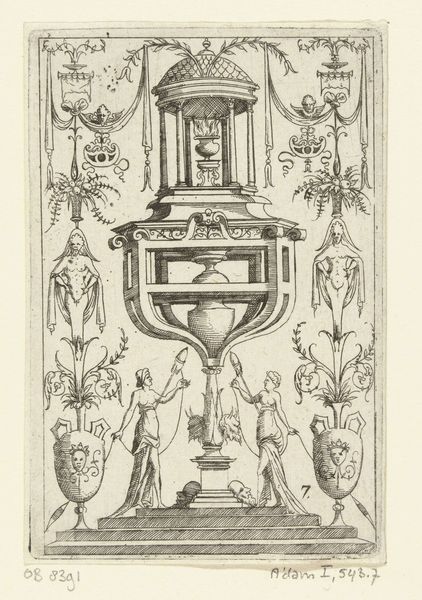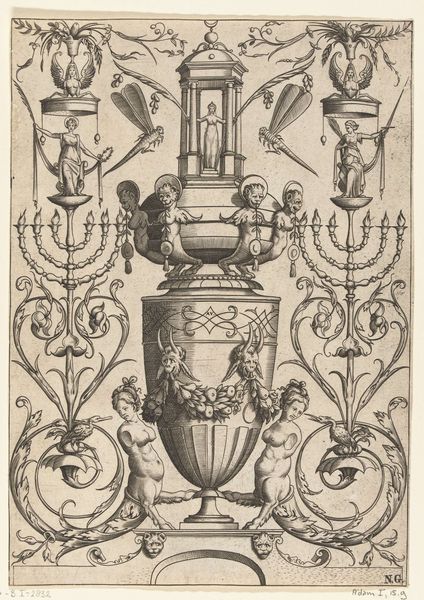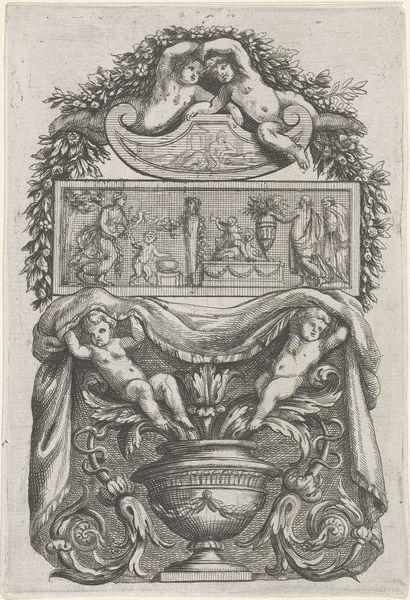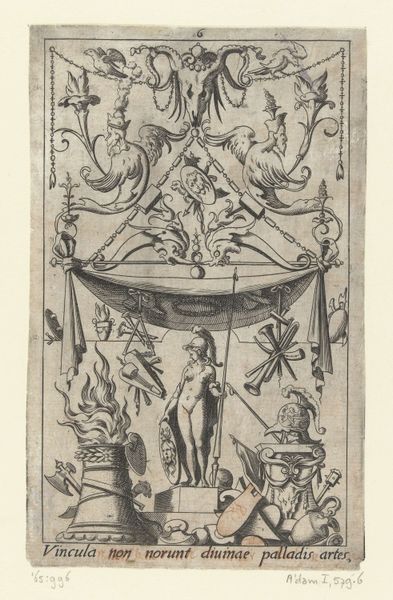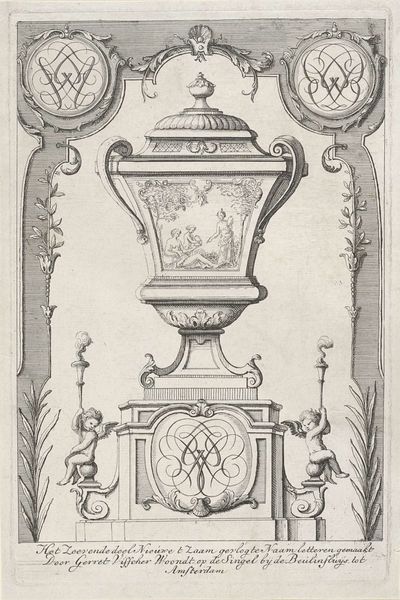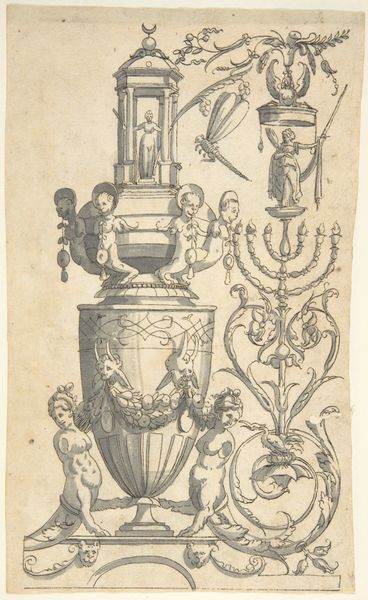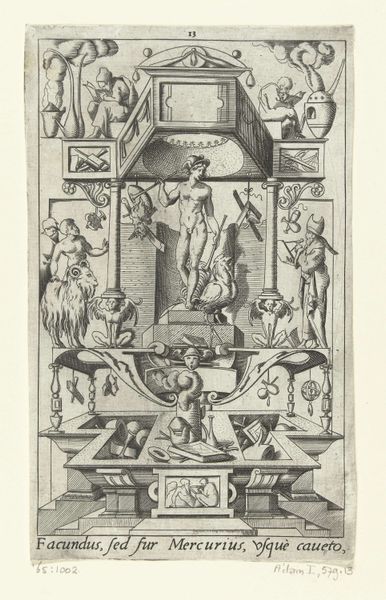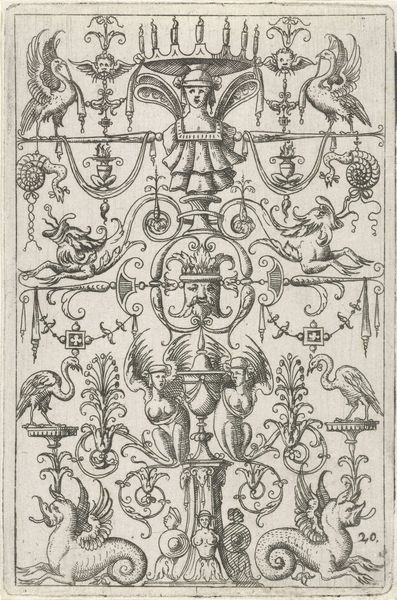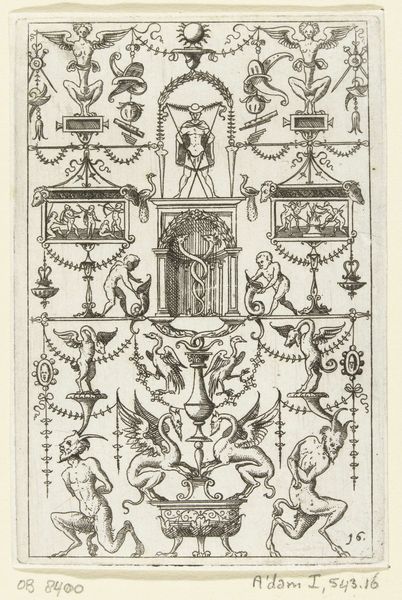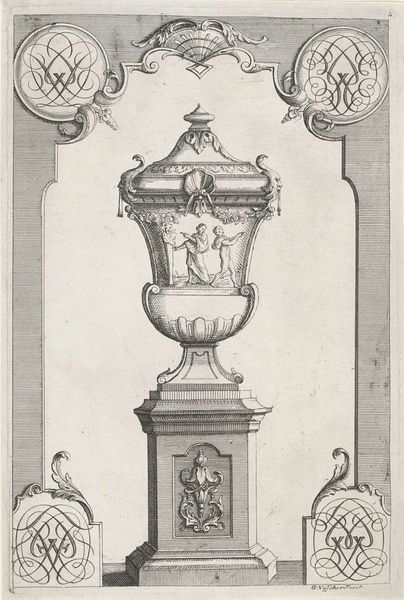
print, engraving
#
allegory
#
pen drawing
# print
#
figuration
#
form
#
11_renaissance
#
line
#
decorative-art
#
italian-renaissance
#
engraving
Dimensions: height 240 mm, width 170 mm
Copyright: Rijks Museum: Open Domain
Editor: This engraving, "High base on which a temple stands," from the mid-16th century, appears to depict a monument of some kind. It is ornate and symmetrical, with lots of classical figures. What do you see in this piece? Curator: It’s fascinating how ornament during the Renaissance wasn’t just about beauty, but about power and meaning. The imagery—the figures, the temple—all connect to ideas about civic virtue and the ruling class. But the medium, engraving, makes me wonder, for whom were these images created? Were these prints meant to disseminate a specific political or philosophical message? Editor: That's an interesting point. It looks like it’s trying to convey importance. How would you interpret the imagery and its effect on the message? Curator: Well, look at how the female figures holding spindles flank what appears to be an offering within the temple. Are these images intended to reinforce contemporary ideas of virtue, piety, sacrifice and governance? What is not being directly referenced but implied? How did power benefit through dissemination of particular visual rhetoric? Editor: So, it's more than just a pretty picture. It’s a reflection of the era’s power structures. Thinking about its social implications casts the artwork in an entirely new light. Curator: Exactly. We can investigate art to better understand complex societies of the past as well as our current world. By thinking critically about art as visual communication, we have more opportunity for cultural equity through awareness.
Comments
No comments
Be the first to comment and join the conversation on the ultimate creative platform.
